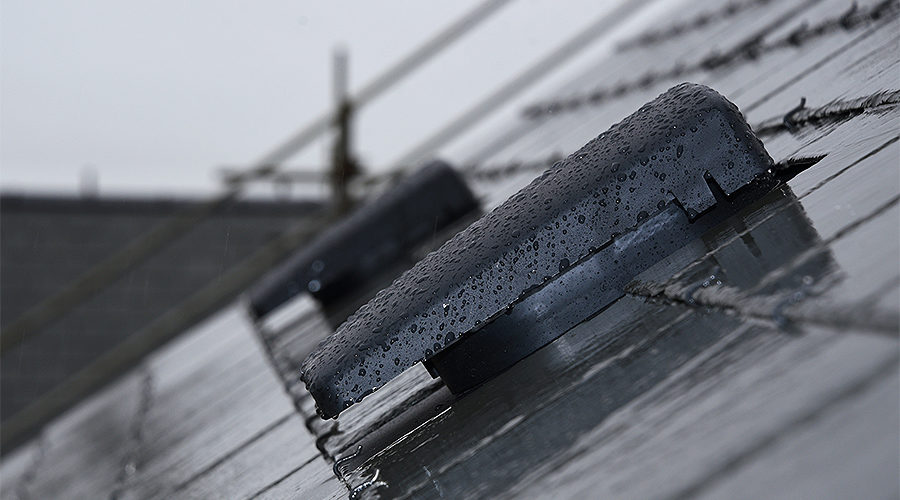Let’s face it, from children’s toys to old camping gear, what goes in our loft spaces often doesn’t see the light of day again. The roof space is frequently seen as an out-of-bounds storage area, where our sentimental keepsakes and unused items go to gather dust. However, as overlooked as they may be for residents, roof spaces cannot be forgotten when it comes to maximising efficiency as Nick King, Portfolio Manager at Klober, explains.
Klober
In a landscape of volatile and increasing energy prices, every penny counts. Add to this the environmental conversation surrounding domestic heating and it’s clear to see why ensuring airtightness in all areas of the home is increasingly a key consideration for housing providers.
‘Tis the season, condensation season
Airtightness is critical when it comes to building thermally-efficient properties, however, if effective roof ventilation is not considered, condensation can easily build up due to a lack of air movement. And, while walls and floors are given top priority when proposing such measures, roof spaces can often be neglected.
It’s a tricky balance to get right – considering airtightness and ventilation – but condensation season is a timely reminder on why it’s so important. From October to April, when the heating is on and our windows closed, the risk of condensation increases. Plus, due to changes in seasonal weather patterns, properties are susceptible to condensation all year round.
Moisture in the roof is not always evident from the main body of the house, but that doesn’t mean it’s risk free. Condensation can lead to staining, and even mould growth, which has serious health risks. Therefore, those responsible for providing safe housing must ensure that appropriate ventilation is considered for residents.
And breathe…
Navigating the delivery of airtightness is made slightly easier with the introduction of financial incentives such as the Government’s ECO+ Scheme, which was introduced to enhance roof space insulation across the UK’s housing stock.
When tackling ventilation, opting for low-resistance, breathable membranes is an ideal choice as their permeable nature allows water vapour to escape through the roof, reducing condensation levels. Specialist products, such as Klober’s Permo Air 160, the UK’s most breathable, British Board of Agrément-approved (BBA) membrane, go a step further and can negate the need for additional ventilation entirely.
For retrofit projects, tile vents and eaves ventilation can allow airflow to the roof space to reduce moisture build up. By sourcing effective and compliant roof ventilation solutions to futureproof properties, housing associations can ensure resident wellbeing. However, selecting the right product for the job is merely the first step.
Getting it right first time
After specifying a quality product, it’s all about the execution. Poorly-installed materials may fall short and lead to further remedial work and costs. Manufacturer’s instructions should, therefore, be followed correctly to get it right first time.
An excellent source of guidance for membranes is Klober’s guide to roofing membranes. Filled with tips and tricks, this resource is ideal for those working with the product for the first time or who want to refresh their knowledge. It includes installation guidelines and covers compliance with BS 5534.
Futureproofing the homes of tomorrow, today
Undoubtedly, the biggest challenge facing housing providers is balancing net-zero targets with sustainable and practical homes. Ultimately, homes must work for the families that live within them. In volatile energy markets, efficiency savings are key but without proper ventilation, residents can fall victim to potentially-dangerous side effects.
We don’t want our ways of living to impact the planet, but we must consider how air and moisture tightness can be properly balanced alongside condensation build up. That’s why I’m urging the housing market to work with trusted manufacturers, like Klober, to enhance the performance of their homes through improved roofing considerations.












